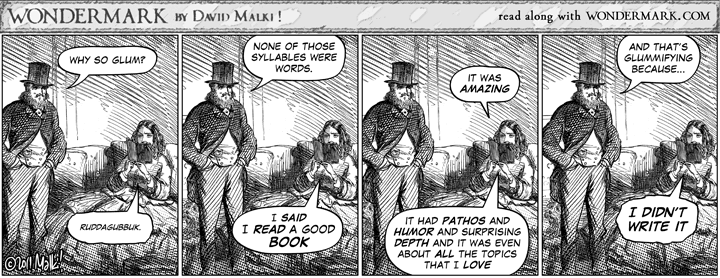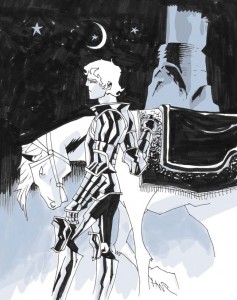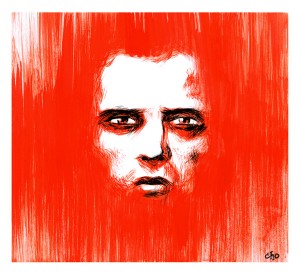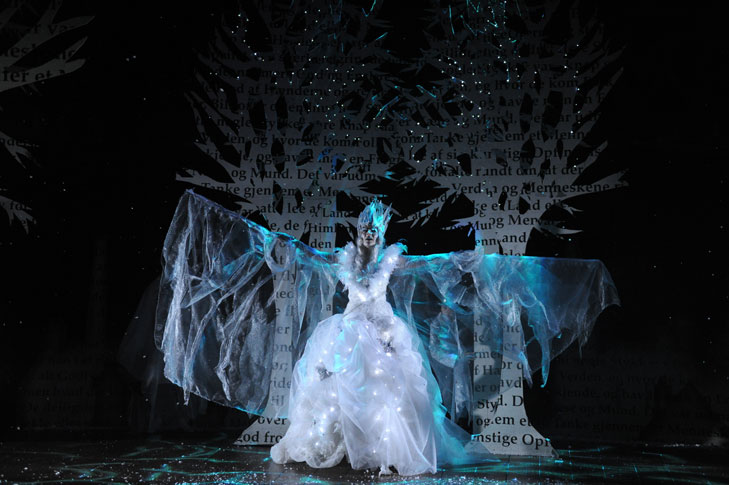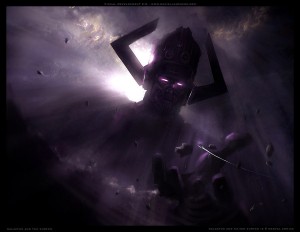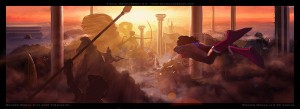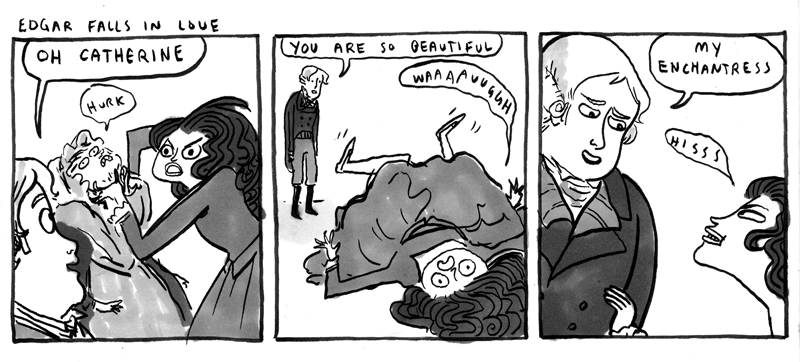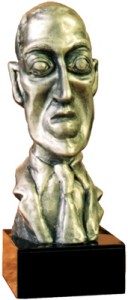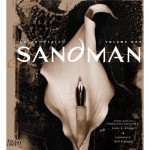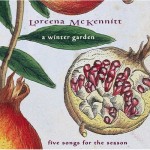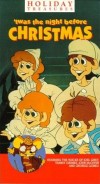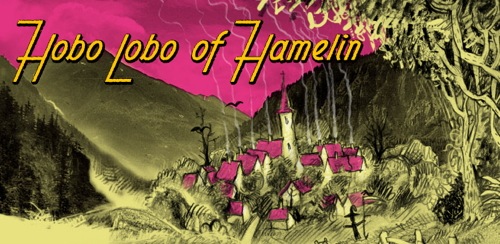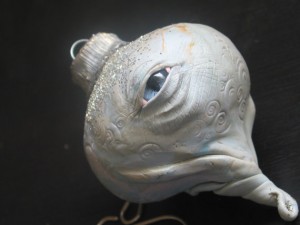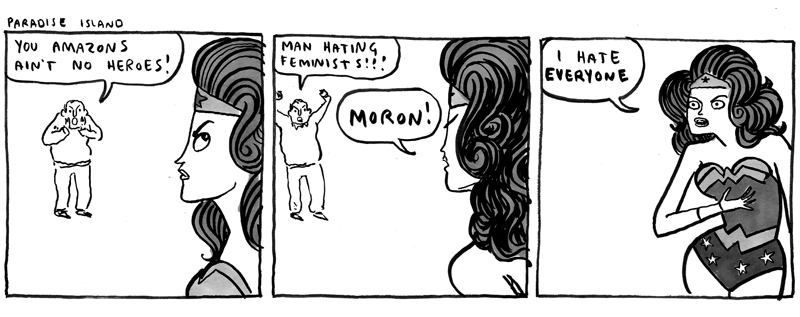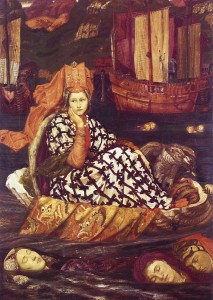 Here are some shiny things that caught my eye recently:
Here are some shiny things that caught my eye recently:
 ♦ Attention, Hellboy fans: over at io9, Mike Mignola talks about his 2012 plans for the big red guy. I’m really looking forward to Hellboy in Hell, but, I’m sad to report, that series doesn’t start until August.
♦ Attention, Hellboy fans: over at io9, Mike Mignola talks about his 2012 plans for the big red guy. I’m really looking forward to Hellboy in Hell, but, I’m sad to report, that series doesn’t start until August.
♦ Yes, I know Christmas cartoons are, like, so last year already, but I was rather taken with Dave Roman’s timeline of the Rankin/Bass Christmas specials. He says, by way of introduction to his well-thought-out chronology:
Growing up, I always tried to work ongoing entertainment franchises into a cohesive continuity…even if that was never the producers’ intention. Did the Ewok TV movies take place before or after “Return of the Jedi”? How could The Muppets share a nursery as babies but not know each other when they reunite in “The Muppet Movie”? This stuff kept me awake at night! So even though I know better now, I always wanted to make a timeline for the original Rankin/Bass holiday specials.
Roman and I should totally be friends because I too am obsessed with continuity no one else cares about! Really, it’s a curse…. Via.
♦ As a writer who continues to be repeatedly rejected, I take comfort in hearing stories about famous, well-respected writers who also suffered from repeated rejections. Gives one hope, or misery loves company, or something like that. Anyway, last week I came across a link to 50 Iconic Writers Who Were Repeatedly Rejected (unfortunately, I can’t remember where I came across the link), and it’s worth a look. However, as Cameron noted, the blurb about Anne Frank is pretty insensitive.
♦ 1979 Semi-Finalist had a nice list of 13 Fantastic Female Comics Creators of 2011. I’m only familiar with about seven of the creators listed, and I can definitely confirm that they are fantastic.
♦ Maybe it’s because I’m probably going to end up on Hoarders: Buried Alive some day myself (plus, I love miniatures), but I’m digging Carrie M. Becker‘s photo series, Barbie Trashes Her Dreamhouse. Babs, I feel you.
Click to see a larger image. Via.
♦ Thank goodness io9’s interests are wide ranging, else I would never have heard about the Hanke-Henry Permanent Calendar, which would finally put everything in a very ordered, logical system. I needed to know such a proposal was afoot. Maybe you did, too?
♦ Last spring, I remember hearing about Ron Moore’s new show, 17th Precinct, a police procedural that uses magic instead of science. Unfortunately, the show never made it past the pilot episode and so fell off my radar—until io9 (bless them!) posted this article about the pilot accompanied by a not-long-for-this-world video of the episode. So, fearing the video would soon disappear, I watched it on Friday, when I really should have been working on my syllabi for the spring semester (good thing, too—on Saturday, the video actually was gone from this world, or the internet, at least). Let me just say that, based on the pilot, if 17th Precinct had made it to the screen, I would have been watching the hell out of that show, which is saying something for me, since I’ve been trying to avoid getting sucked into real-time serial watching. For those of you who didn’t get to see the video, io9 does a great job of breaking down the pilot (I’ll admit to being a little disappointed with the big reveal at the end of the pilot episode), but it was a fine, fine thing to watch. Ah, what might have been!
♦ If you ever wanted to remix James Joyce, your time is now—The Irish Times reported that the EU copyright on Joyce’s work expired at midnight on New Year’s Eve, so now everything (or, at least, the work published while he was alive) is in public domain, including Dubliners, A Portrait of the Artist as a Young Man, Ulysses, and Finnegans Wake. I expect crazy mash-ups will follow soon enough, but I’m looking forward to seeing what people with a genuine respect for the material do with it. Via.
♦ A new year is upon us, and no one offers better new year’s wishes than Neil Gaiman. Here’s his wish for 2012:
And for this year, my wish for each of us is small and very simple.
And it’s this.
I hope that in this year to come, you make mistakes.
Because if you are making mistakes, then you are making new things, trying new things, learning, living, pushing yourself, changing yourself, changing your world. You’re doing things you’ve never done before, and more importantly, you’re Doing Something.
So that’s my wish for you, and all of us, and my wish for myself. Make New Mistakes. Make glorious, amazing mistakes. Make mistakes nobody’s ever made before. Don’t freeze, don’t stop, don’t worry that it isn’t good enough, or it isn’t perfect, whatever it is: art, or love, or work or family or life.
Whatever it is you’re scared of doing, Do it.
Make your mistakes, next year and forever.
And here’s a poster someone made of Gaiman’s perhaps most well known new year’s wish, which I think is quite grand (both the wish and the poster):
 And so I wish all of that for you, Dear Readers. Happy New Year!
And so I wish all of that for you, Dear Readers. Happy New Year!



